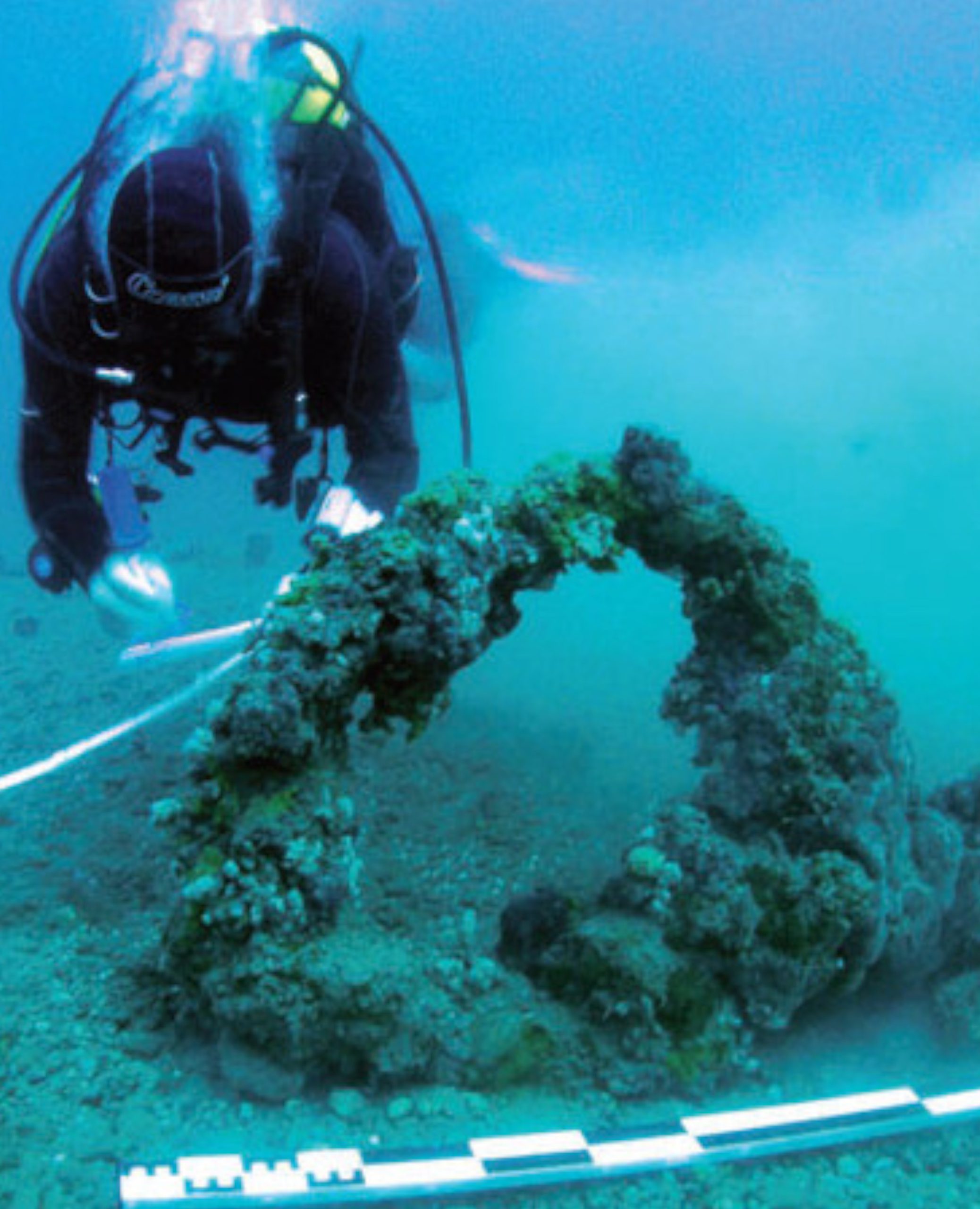Archaeological materials recovered from the Mortella shipwrecks
Material remains are scarce at the Mortella site, possibly due to several factors: the fire that apparently destroyed the ships before they sank or the looting that may have taken place at the site before the archaeological intervention are explanations that could partly explain the absence of material, but everything suggests that it is mainly due to the fact that the ships were emptied before they sank, mainly of the lighter material, which is why the cannons or anchors, valuable but very heavy elements, are still preserved.
CERAMICS
Ceramological studies were initiated by Dr Franck Allegrini Simonetti (archaeologist for the Government of Corsica), and then developed by Prof Marco Milanese (University of Sassari, Sardinia). They make it possible to chronologically date the pieces to the first half of the 16th century.
In the case of Mortella 3, the ceramics are represented by a series of fragments, located mainly in the rear part of the wreck; bowls, jugs, pots and jars, essentially products from the northern Tyrrhenian area, can be recognised. This is the case, in particular, of fragments of majolica from Montelupo Fiorentini or fragments with incised decorations from a Pisan production site.

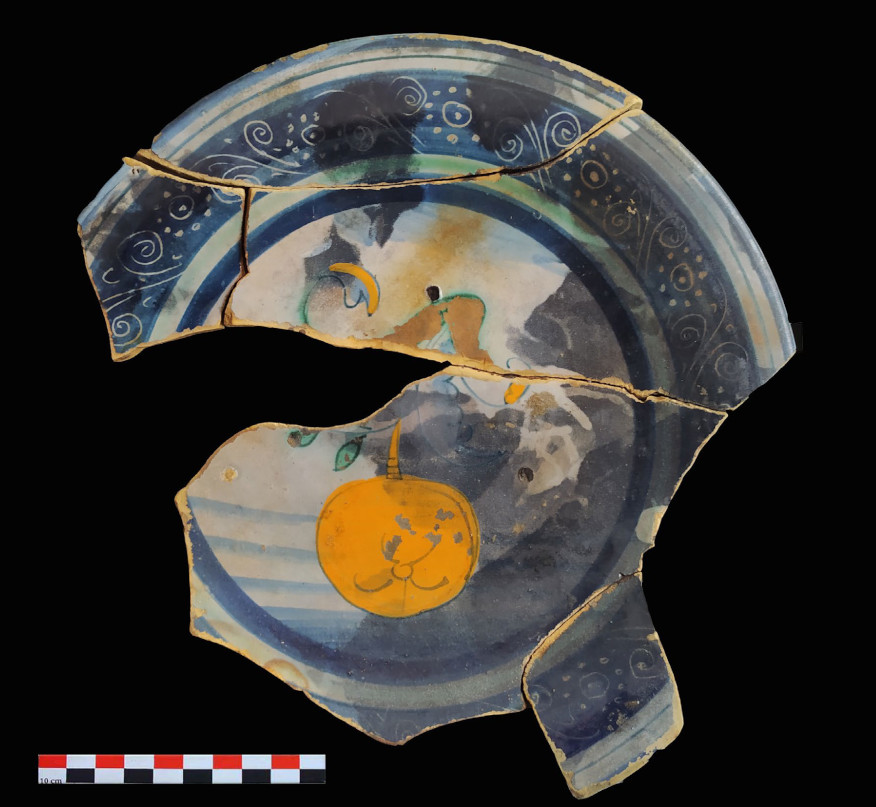
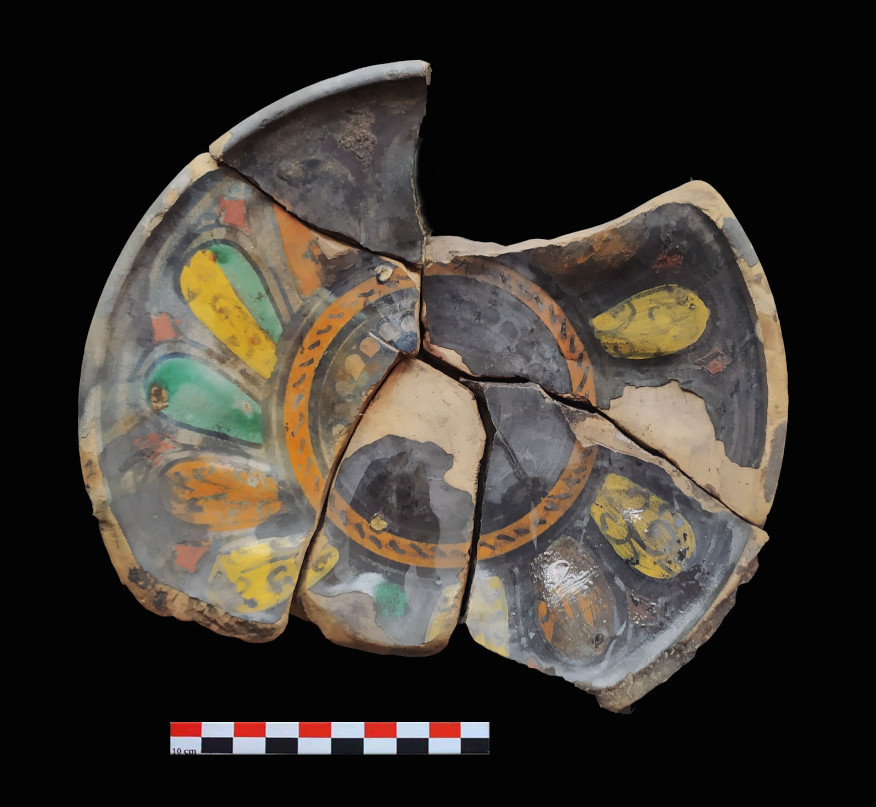
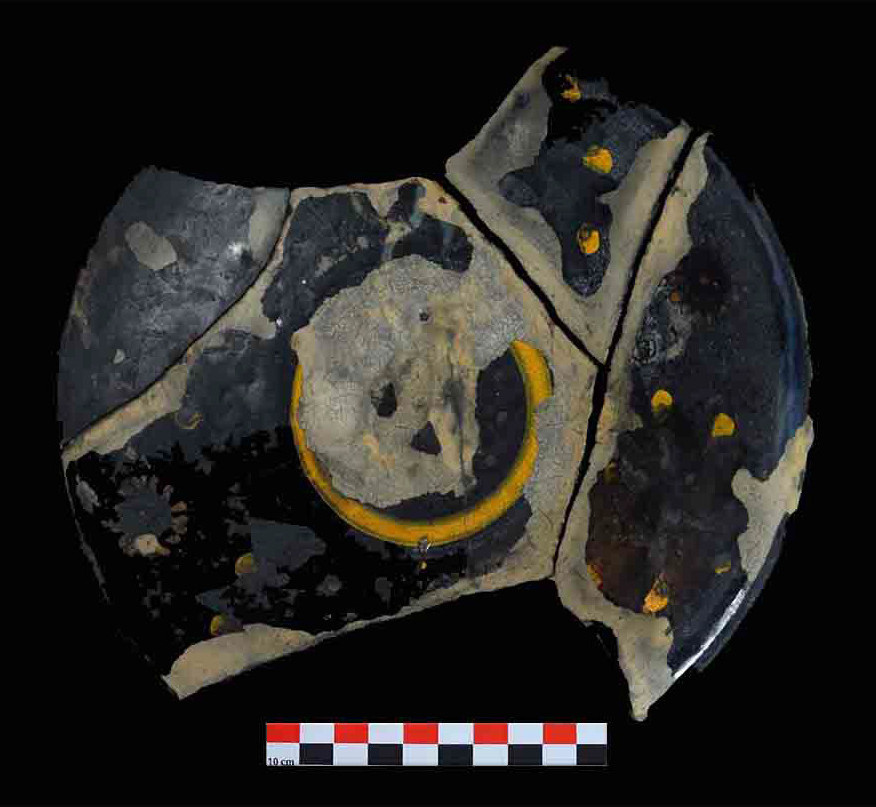
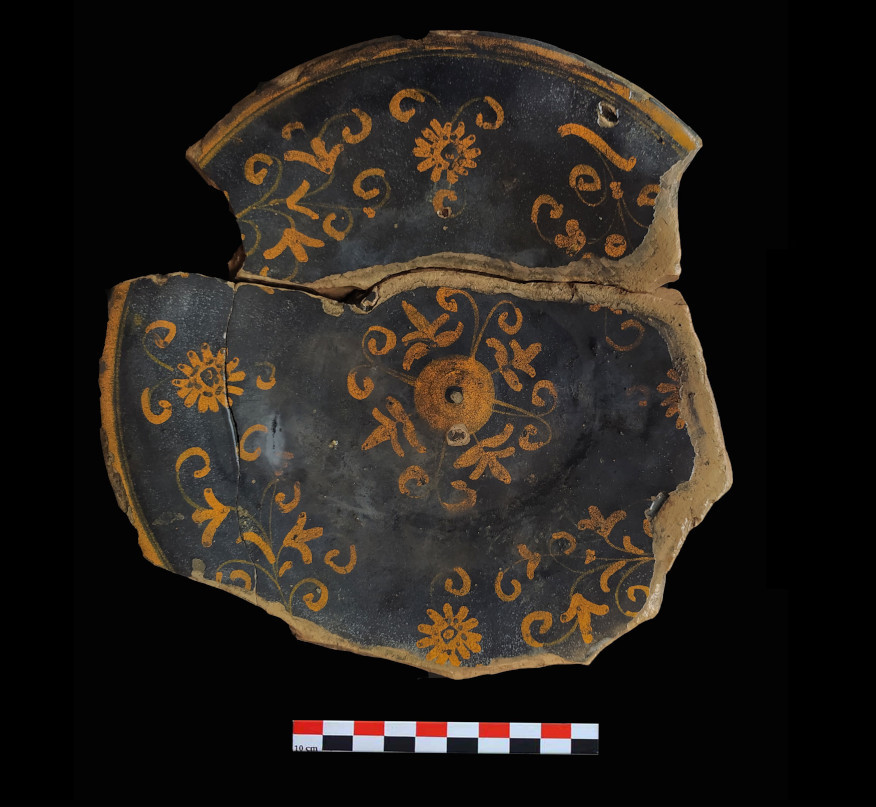
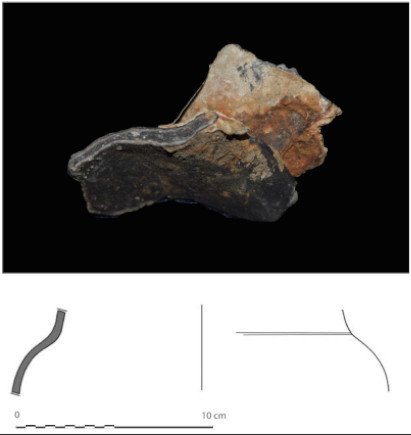
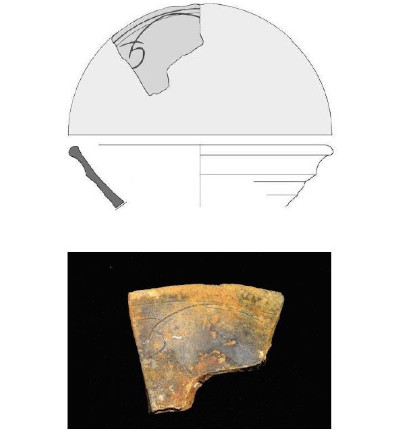
In the case of Mortella 2, the quality of the ceramics found is outstanding. The preliminary study of this ceramic assemblage, carried out by Marco Milanese (University of Sassari), shows that of the many fragments found, it was possible to reconstruct some almost completely, essentially Montelupo majolica pottery, with a large number of decorations. Furthermore, the exact chronology of the Mortella wreck makes it possible to associate a precise date to the large number of known examples of Montelupo tin-glazed earthenware.
The data available today indicate that the ship was not carrying a cargo of pottery, but that its voyage (and that of its sister ship Mortella 3) was for other purposes, such as the supply of grain needed for the population of the city of Genoa.
CANNONS
Their study was initiated by Max Guérout (GRAN) and then developed by Fabrizio Ciacchella (Laboratorio di Storia Marittima e Navale – NavLab, University of Genoa).
The Mortella 3 site contains nine pieces of artillery about 2 m long and 35 to 40 cm in diameter. Their morphology, despite the concretions they contain, is similar to wrought iron pieces characterised by fretwork forming protrusions and manipulation rings. To these ten pieces must be added five elements, interpreted as butts, measuring 70 to 80 cm in length.
In the Mortella 2 wreck, on the other hand, various pieces of wrought iron artillery with rings were also found, specifically six tubes and five butts. In addition, 6 cannonballs were found, plus another one found during the 2007 survey, with different calibres: 21 cm, 17 cm, 15.8 cm and 11.5 cm.
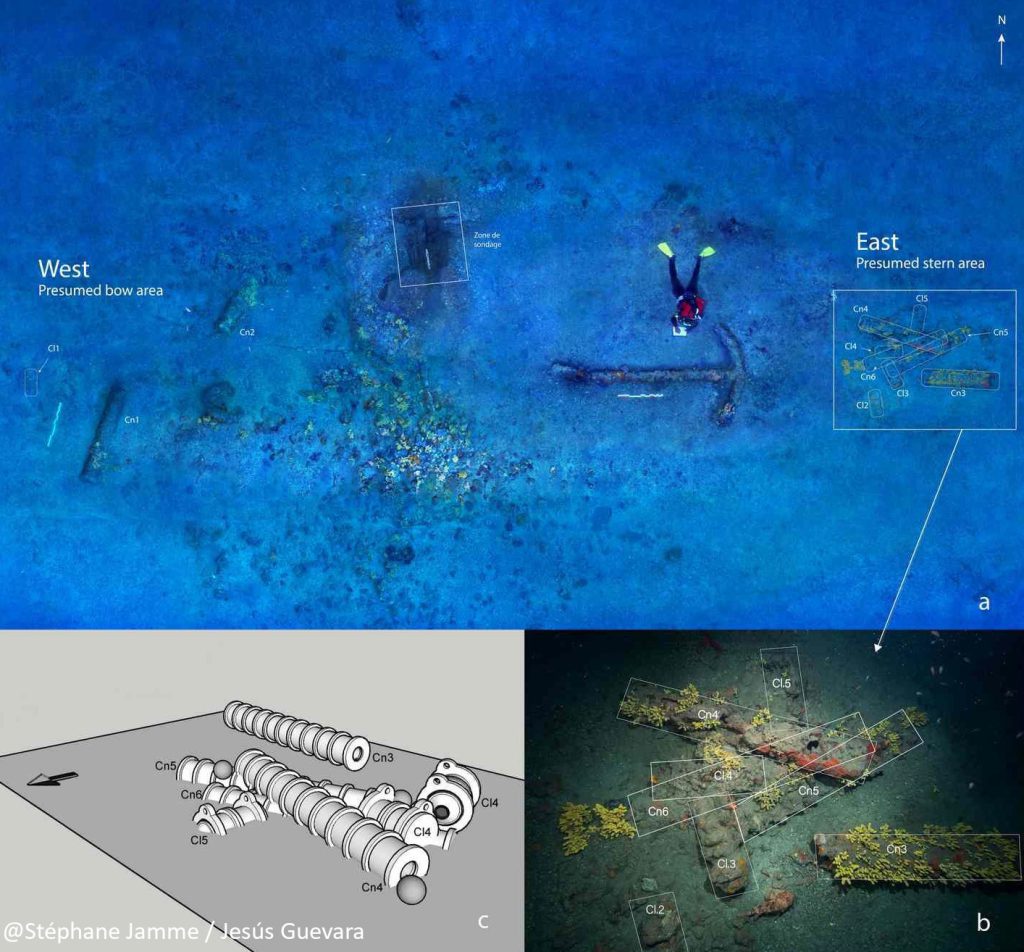
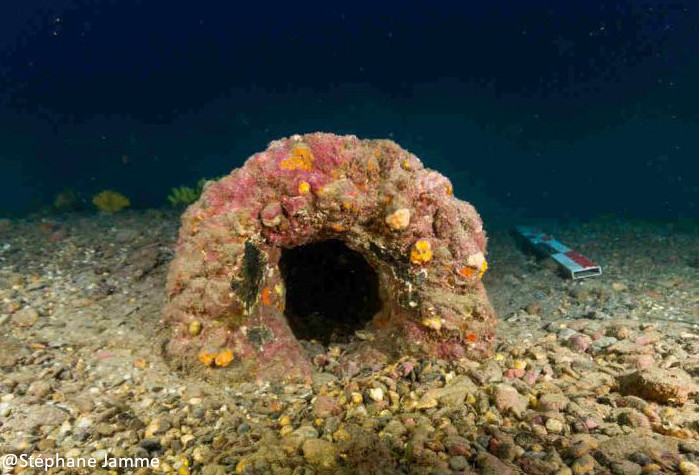

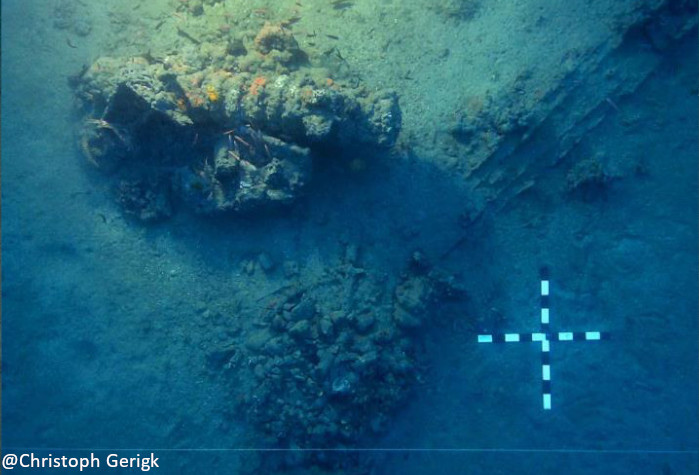
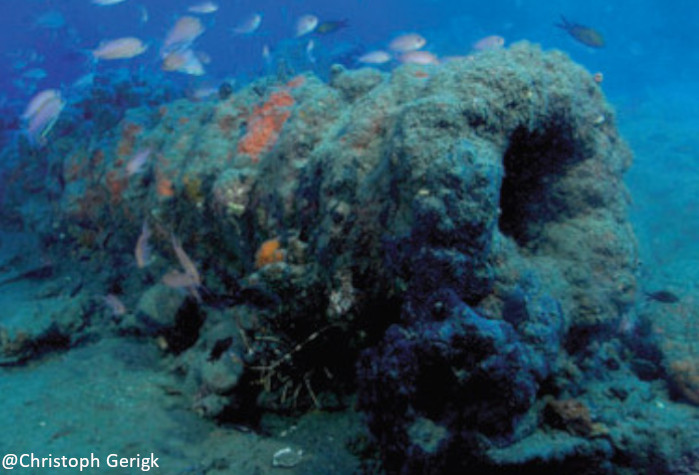
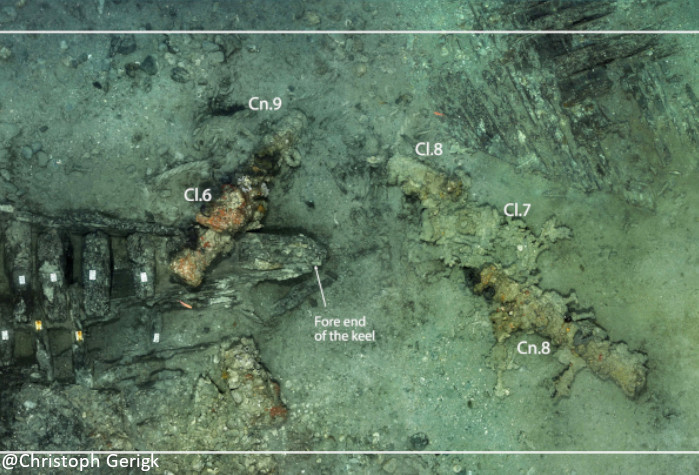
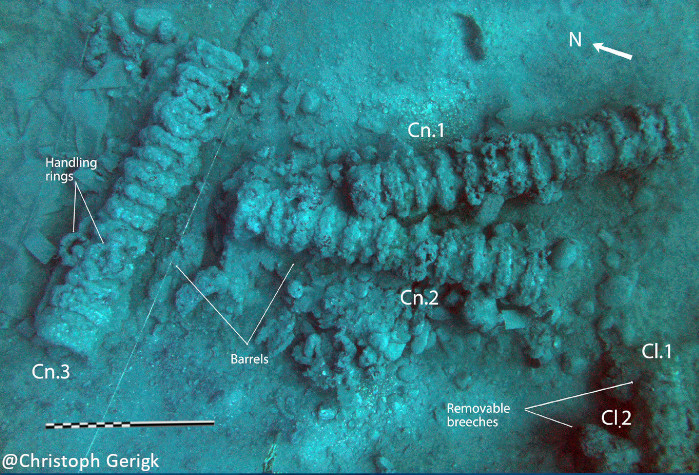
This type of cannon, known as bombards, was in general use on ships between the 15th century and the mid-16th century, when its manufacture ceased in favour of cast iron artillery.
All the artillery found on the Mortella 2 wreck, as well as on Mortella 3, belong to the same type of pieces.
These cannons consisted of a tube, a breech and a wooden gun carriage. The guns were cylindrical tubes open at both ends, which could be loaded from the rear (breech loading). Their construction was usually similar to that of barrels, made of long iron staves of trapezoidal cross-section, joined by short cylindrical sleeves, reinforced with thick hoops overlapping the numerous seams of the sleeves. The breeches were loaded with powder; they could be made of staves and hoops, like the cannon, or of a single piece of wrought or cast iron. Wooden gun carriages were usually single-axial, made of a hollow half log reinforced with iron, to which the guns were attached. At the rear a hole could probably be present to drain water mixed with vinegar that was used to cool the guns when necessary.
At the rear end, the wooden gun carriage had a vertical extension; a wooden wedge was between it and the breech to prevent the breech from being thrown backwards when firing and to increase the grip with the gun. A pair of small wheels could be added under the forward part of the gun carriage to increase mobility; their diameter varied according to the position on the ship and the height of the deck on the port side. Aiming the gun was possible by simply lifting the rear of the gun with a wedge or rack.


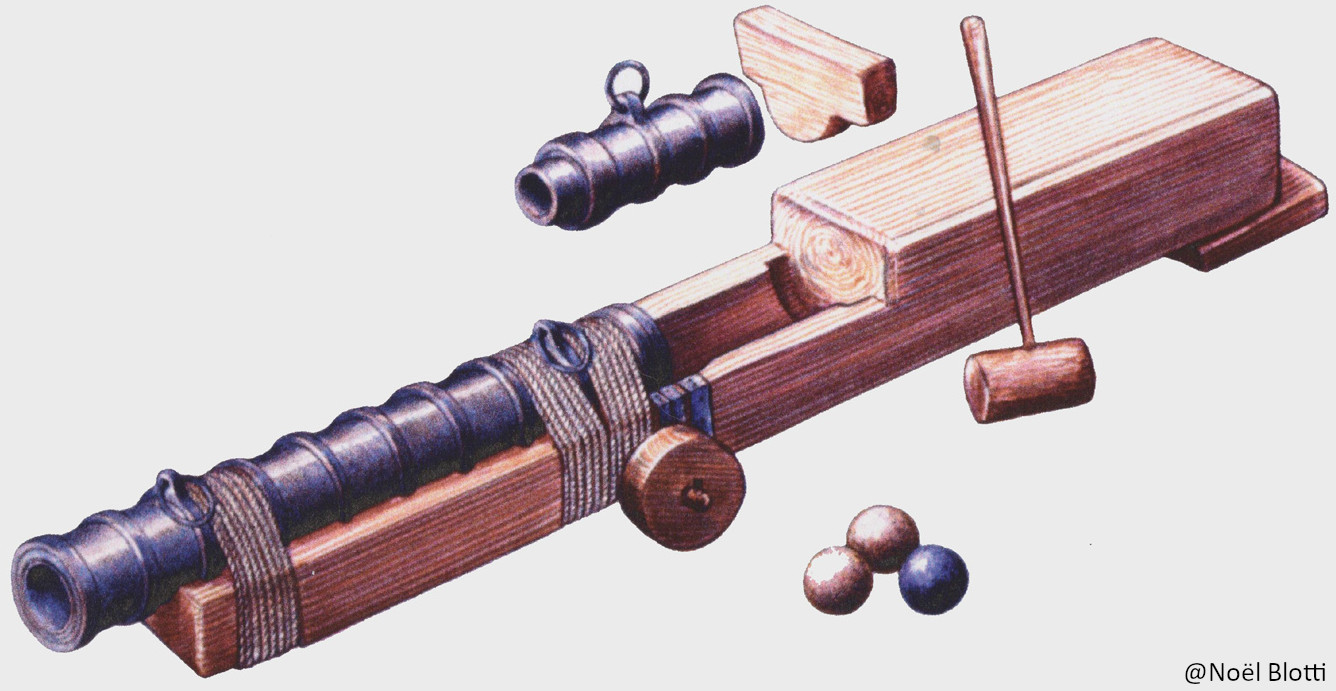
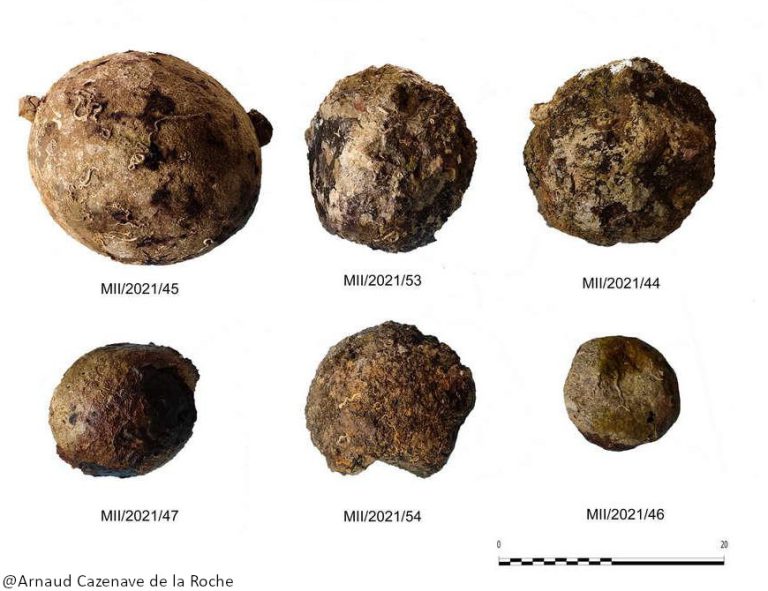
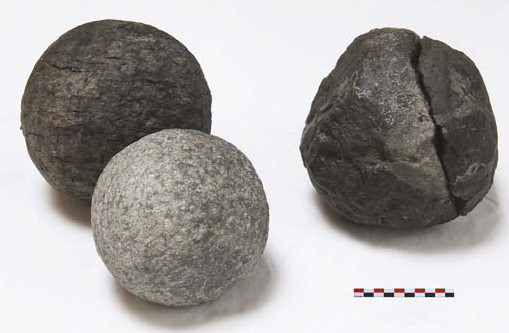
Alongside the cannonballs, stone cannonballs were found, which can be divided into two categories: intact cannonballs and cracked or fragmented cannonballs. In this respect it is illuminating to compare the stone cannonballs found in the Mortella 3 wreck and those found in the Lomellina wreck (built around 1504 and sunk in 1516). It has three diameters: 96 mm, 125 mm and a majority (about twenty cannonballs) with a diameter of between 220 and 230 mm and an average weight of between 16 and 17 kg.
The various petrographic analyses carried out during each archaeological campaign show that, with the exception of a few cannonballs made of serpentine, a metamorphic type of rock originating from northern Italy and typical of the coasts of the Gulf of Genoa, the nature of the rocks used for the manufacture of small calibre cannonballs is often associated with rocks of volcanic origin from southern Italy.
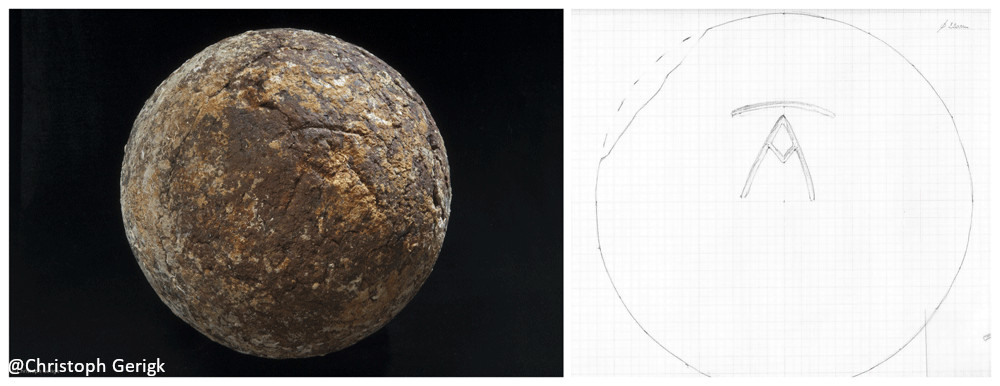
ANCHOR
Their study was carried out by Fabrizio Ciacchella (Laboratorio di Storia Marittima e Navale – NavLab, University of Genoa).
Two iron anchors were located on the perimeter of the Mortella 3 wreck.
The west anchor, located 15 metres west of tumulus A, was 4.5 metres long and weighed approximately 800 kg.
The south anchor, located 15 metres southwest of tumulus B, had a length of 4.3 metres and weighed approximately 660 kg.
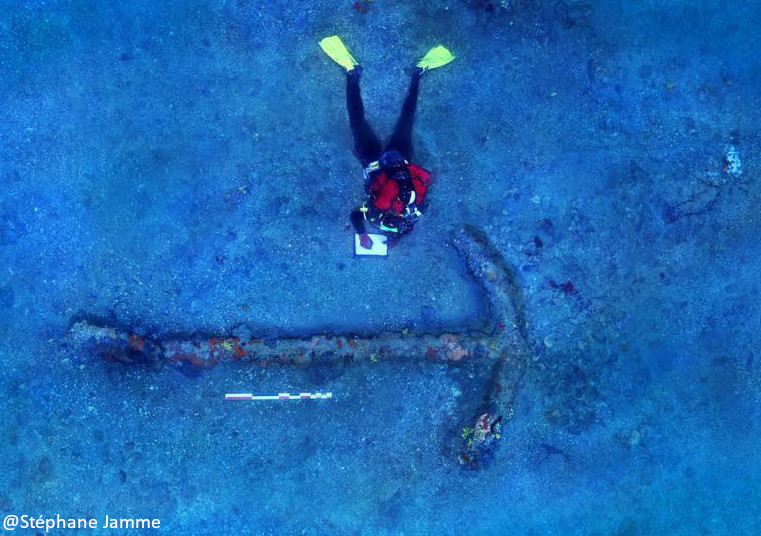
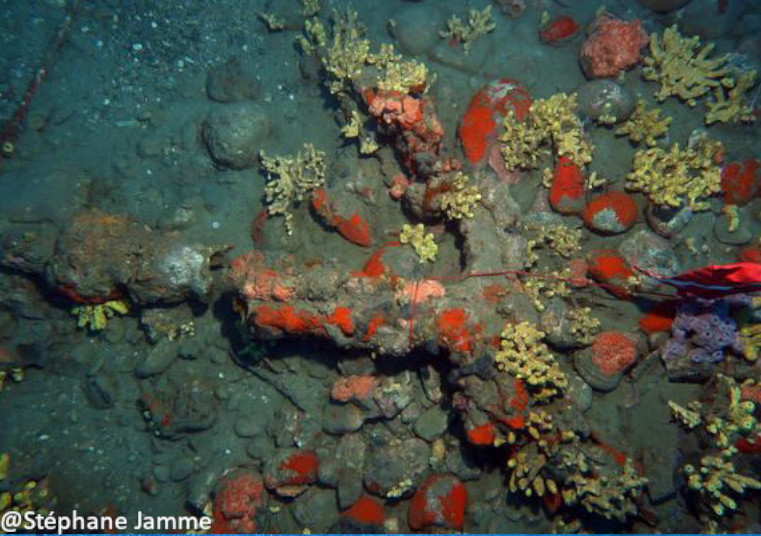
Mortella 2: Two anchors were also located on this wreck.
The east anchor, known since the discovery of the wreck, is clearly visible in the centre of the site; it is preserved in all its iron parts, but the wooden stock is missing, destroyed by the fire caused when the ship was abandoned and/or by marine xylophages.
The west anchor, discovered on the first day of the 2021 campaign, is located 4 m to the west; it is the smallest and is not completely preserved, as it is missing the ironwork, the upper part of the shank and the wooden stock.
From a morphological point of view, the Mortella anchors are very similar: they all have an arganeum, a convex oval-shaped head, the nuts (shanks) in the same plane as the arms, the arms are curved and the claws are triangular. The angles between the shank and the arms (measured at the withers) have very little variation, which could be due to imperfect forging or deformation during use of the anchor.
It is possible to estimate the weight of the anchors by multiplying their volume (calculated from the dimensions after subtracting the thickness of the concretion) by the density of the iron. It would range from about 490 kg for the Mortella 2 west anchor to 800 kg for the Mortella 3 west anchor.
OTHER MATERIALS
In addition to the aforementioned materials, other remains of great interest have been found in the Mortella shipwreck, such as large quantities of ropes (most of them burnt), a small barrel, bovine bones and the bilge pump in Mortella 3.
The pumping system on Mortella 3 is probably a “lift pump” that lifts the water by the action of a piston. To draw water from the bilges, a pump is installed in a box, consisting of four planks joined by square posts forming a bulkhead. The lower valve of the pump is supported by the rods and rods. The upper part is supposed to have a leather flap, which no longer exists. The body of the pump is cylindrical and is hollowed out on the inside to house a piston. In the case of the Mortella 3 wreck, only the lower valve, the foot and the pump body have been preserved.
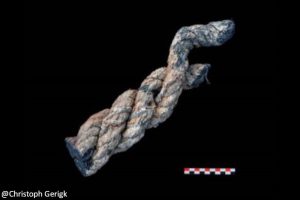
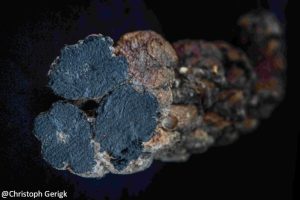
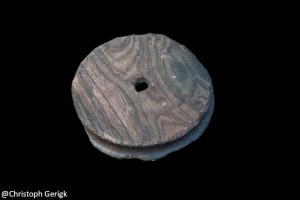
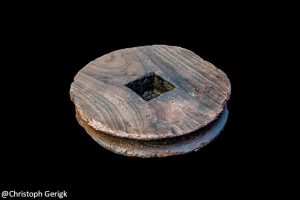
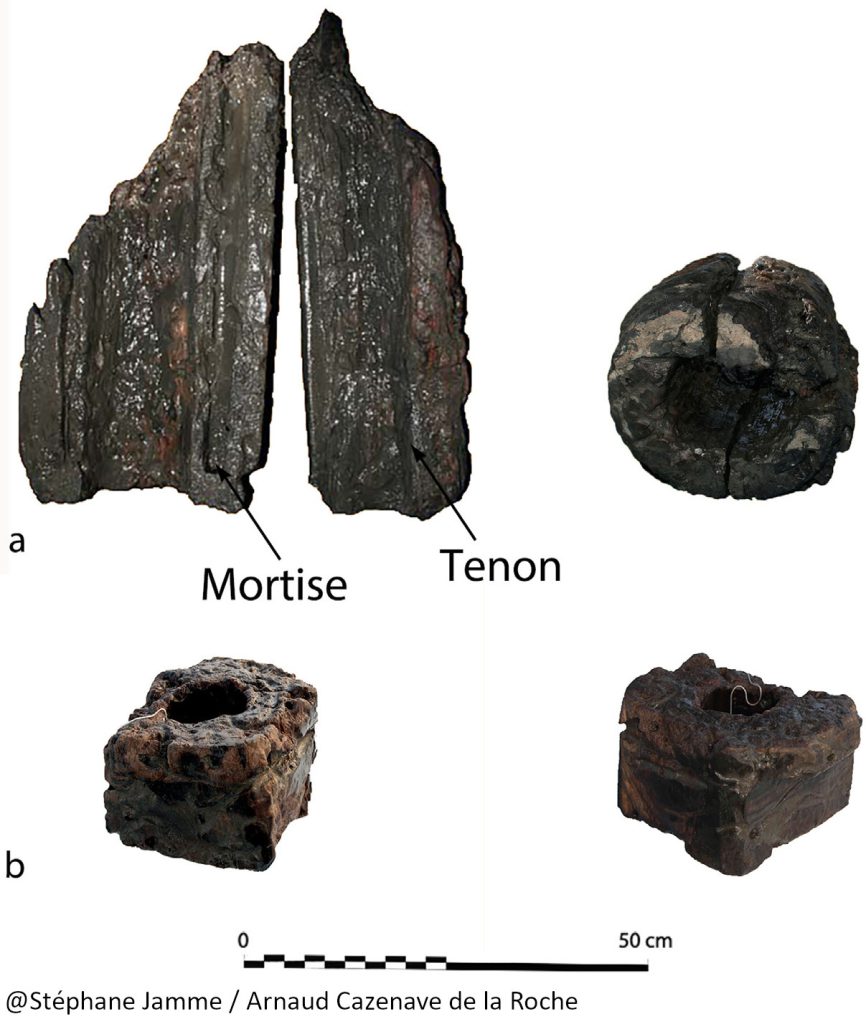
Dating through Dendroarchaeology
Dendrochronology is the scientific discipline that studies the environmental changes recorded in the annual growth rings of trees.
Shipwrecks are the most complex object of study for dendrochronological analysis, since ships could be built with wood from different sources and then repaired in different shipyards. Therefore, the success of dendrochronological dating is often closely linked to the number of suitable samples taken for analysis.
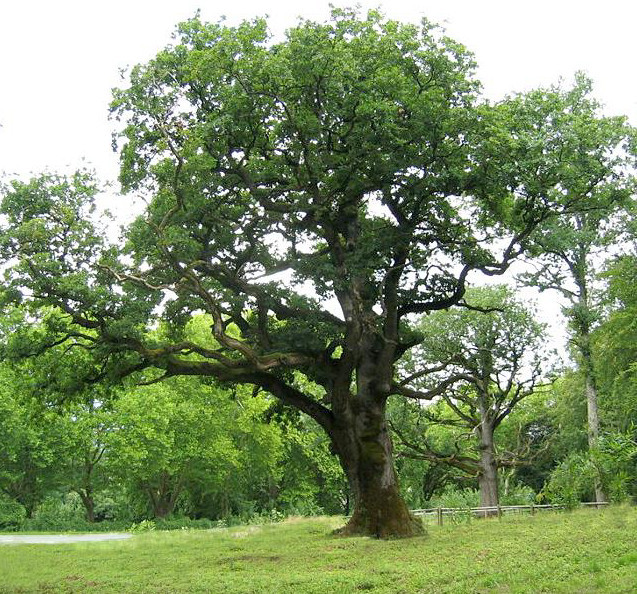

The dendrochronological study, carried out by Fabien Langenegger (Office de l’archéologie et du Patrimoine du canton de Neuchâtel, OPAN), has made it possible to establish a terminus post quem for the period of the ship’s construction.
The first analysis was carried out on a single sample containing sapwood, but subsequently, on the samples taken at Mortella 2, this dating was corroborated by the analysis of thirteen samples with 546 rings, all taken from deciduous oak, four of which were successfully completed with the presence of sapwood and three of which also had cambium. The two main conclusions of this study are as follows:
- The curves are synchronised with the reference points “from the northern Alps, the Allier, Burgundy and Lorraine to Switzerland”. However, further samples would be needed to determine the place(s) of supply.
- The calculations made it possible to establish the probable date of felling of the trees used for the construction of the hull as autumn-winter 1521.
The chronology highlighted by these studies, together with the archaeological evidence and textual documentation, leaves no doubt as to the identity of the Mortella wrecks: the Boscaina and Ferrara ships, sunk in August 1527 in the historical context of the Seventh Italian War.


